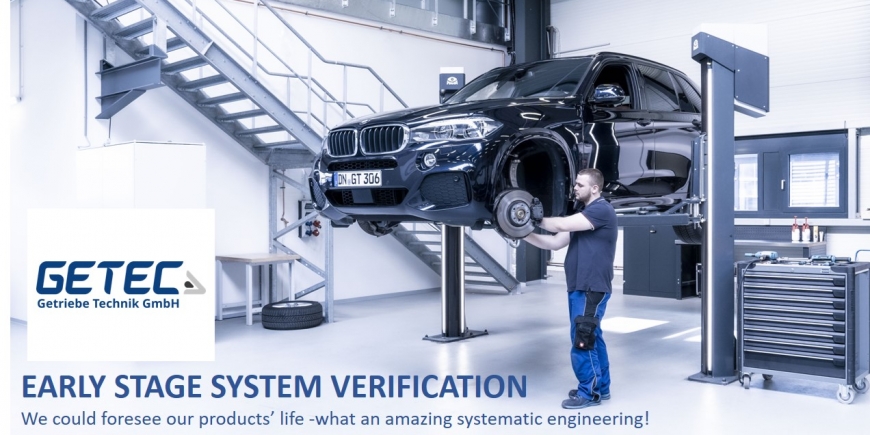EARLY-STAGE SYSTEM VERIFICATION
AUTHOR: Mr. Wuyin Hui
Controller & Software Manager & CTO Assistant
We could predict the life of our products – what an amazing systematic technique!
GETEC carries out a complete development process for each new product. Only when the product properties meet the product requirements does GETEC report the so-called “system status”. At the beginning of a development, GETEC evaluates the engineering package with a process to assess whether the development in cooperation with customers and suppliers can generate a reasonable closed loop.

This cycle goal can be used to create a multidimensional overview for generating requirements. This overview must contain at least two dimensions: the project phase and the development level.
The project phase can range from “concept” to “delivery of the final development package” (the so-called “project completion”). The development level ranges from the definition of the system architecture to the detailed development disciplines for hardware, software and electronics.
GETEC divides the requirements into 3 groups:
- Open functional requirements that a product can place on a vehicle
- Open non-functional requirement that a product should build into a vehicle
- Known specified customer requirement – regardless of the type of requirement
 The comparison of requirements is a first milestone. After reaching this milestone, GETEC starts to independently develop the requirements. GETEC has extensive experience in the field of drivability and has numerous skills to connect the technical realization method with it. In-depth benchmarking will be applied to support pre-validation of requirement definition and indications of market usage through comprehensive road load data (RLD). Deep insights can be gained by decoding the vehicle network (CAN, FlexRay or UDS) and by sensors.
The comparison of requirements is a first milestone. After reaching this milestone, GETEC starts to independently develop the requirements. GETEC has extensive experience in the field of drivability and has numerous skills to connect the technical realization method with it. In-depth benchmarking will be applied to support pre-validation of requirement definition and indications of market usage through comprehensive road load data (RLD). Deep insights can be gained by decoding the vehicle network (CAN, FlexRay or UDS) and by sensors.
This information includes the load mapping of how a driver in a given market might use the vehicle, e.g. B. Powertrain state transitions (driving mode change, e.g. from EV to HEV mode) and operating window adjustments (defining when to use which mode, based e.g. on battery state of charge). In combination with non-functional requirements, such as target market, guidelines and regulations, NVH, cost target and space limitation, a complete catalog of requirements results. On this basis, GETEC develops a pool of concepts including CAE calculations for the most important performance characteristics of the core elements, such as B. the electric motor map. GETEC’s excellent experience in the field of control (from strategy mapping to detailed actuator control) enables the concepts to be applied to GETEC’s simulation platform. The results of the concept pool are categorized into different abstraction models. Each category is sent to GETEC’s simulation platform and stimulated by vRLD.
The result is analyzed in detail by GETEC’s application and CAE expert team to ensure:
- acceptable drivability of the system when used in a vehicle
- providing the instantaneous usage limit or statistical usage profile for each key element of the system
Each usage profile is analyzed by CAE to provide engineers with a performance score for all elements.
The result leads to the detailing of the concept. All inputs are based on a highly experienced analysis of the market/driver usage/driveability/mature understanding of the method of driving elements/advanced strategy prediction. With this accurate and appropriate input, all technical forces are directed towards the best solution and the optimal result.
Engineering is meant to work toward a goal, and steering the work of engineers in one direction is a challenge throughout this industry. That is why GETEC has brought together the different cultures in all departments and the result is a highly qualified, state-of-the-art technical solution. GETEC offers a highly efficient development, with a deep understanding of the product requirements and properties.

